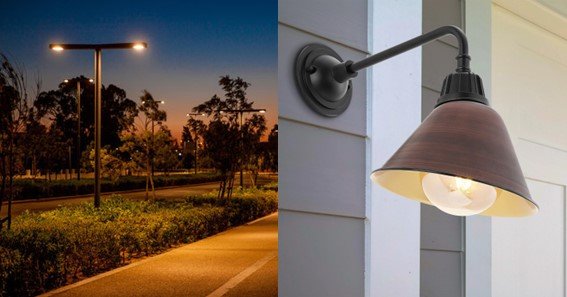Light pollution is an increasing problem, with artificial light spilling into the sky, disrupting ecosystems, and obscuring the stars. Fortunately, addressing this issue is possible with simple yet impactful strategies. Here are some key approaches to prevent light pollution and restore natural darkness to our skies.
Key Strategies for Preventing Light Pollution
- Use Shielded Lighting
- What It Is: Shielded lighting directs light downward, preventing unnecessary light from escaping upwards or sideways.
- Impact: Shielded fixtures reduce skyglow and minimize light trespass into neighboring areas, enhancing visibility without contributing to light pollution. This strategy is effective for both residential and commercial lighting.
- Install Motion Sensors and Timers
- What It Is: Motion sensors ensure that outdoor lights only turn on when necessary, while timers automatically switch lights off after a set period.
- Impact: These tools help reduce unnecessary lighting, saving energy and minimizing light pollution during nighttime hours. Implementing this in homes and urban areas can drastically cut down on artificial lighting.
- Opt for Warmer Lighting
- What It Is: Lights with warmer tones (lower color temperatures below 3000K) produce less blue light, which has a more significant impact on the night sky and wildlife.
- Impact: Warmer lights are better for human circadian rhythms and reduce the scattering of light in the atmosphere, thereby lowering skyglow.
- Promote Dark-Sky Initiatives
- What It Is: Communities around the world are adopting dark-sky ordinances, which regulate outdoor lighting to preserve natural darkness.
- Impact: Dark-sky-friendly cities and parks benefit from reduced light pollution, which enhances stargazing opportunities and supports wildlife conservation efforts. Supporting these initiatives is crucial for long-term change.
- Turn Off Unnecessary Lighting
- What It Is: Simply turning off lights that are not in use, especially indoor and outdoor lights that aren’t essential at night, can significantly reduce light pollution.
- Impact: This simple action can save energy and cut down on unnecessary light trespass, restoring a more natural night sky.

Conclusion
By making small changes such as using shielded lighting, switching to warmer bulbs, and turning off unnecessary lights, we can all contribute to the prevention of light pollution. These steps not only protect the night sky but also improve health, save energy, and help wildlife thrive.
FAQ
- How can shielded lighting help prevent light pollution?
Shielded lighting directs light downwards, preventing it from scattering into the sky and reducing skyglow. - What are the benefits of using motion sensors to prevent light pollution?
Motion sensors ensure that lights are only on when needed, reducing unnecessary light exposure and energy consumption. - Why is warmer lighting better for preventing light pollution?
Warmer lights emit less blue light, which scatters more easily in the atmosphere, thus reducing skyglow and its harmful effects on wildlife. - What are dark-sky initiatives?
Dark-sky initiatives are community-driven efforts to regulate outdoor lighting, minimize light pollution, and preserve natural night environments. - How does turning off unnecessary lighting reduce light pollution?
Turning off lights that aren’t in use cuts down on wasted energy and prevents light from spilling into the sky, reducing overall light pollution.










